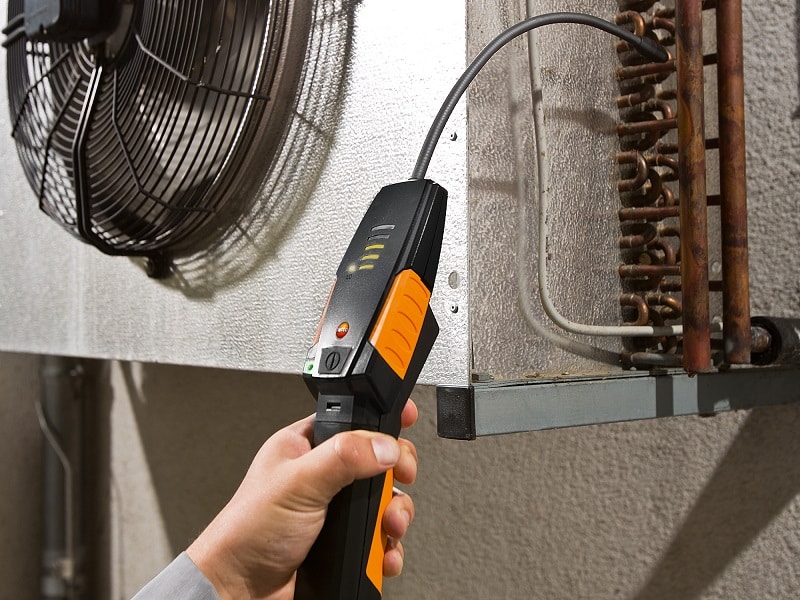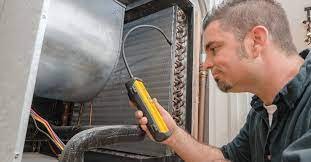At TheKitchenApplianceDad.com, we understand the importance of maintaining your appliances in top working condition. Today, we’re diving into the topic of refrigerant leaks in refrigerators and air conditioning systems. Refrigerant leaks are not just a nuisance; they can significantly impact appliance efficiency, increase energy costs, and harm the environment. Below, we explore the various methods available for detecting these leaks, helping you ensure your appliances run efficiently and safely.
Before jumping into detection methods, it’s crucial to understand why refrigerant is key to your cooling systems. Refrigerant is a chemical compound that absorbs heat from the environment and provides air conditioning through a cycle of evaporation and condensation. When your system loses refrigerant due to leaks, it cannot efficiently cool your space, leading to overworked machinery and increased wear and tear.

The first step in detecting a refrigerant leak is a simple visual inspection. Look for signs of oil residue around the refrigerant lines, as refrigerant oil can escape from small leaks. Additionally, check for any visible damage or wear on the lines and connections.
A traditional and straightforward method, the soap bubble test, involves applying a soap solution to the suspected leak areas. Once the system starts running, bubbles will form at the leak points, indicating the presence of escaping refrigerant. This method is simple and effective for locating larger leaks.
For a more advanced approach, electronic leak detectors offer a high-tech solution. These devices, equipped with sensors designed to detect the chemical components of refrigerants, can pinpoint leaks with a high degree of accuracy. They are particularly useful for finding small leaks that are not easily visible or accessible. Brands like Inficon and Fieldpiece offer popular models widely used in the industry.
Ultrasonic leak detectors work on the principle that escaping refrigerant creates a sound as it exits a leak point. These devices pick up the ultrasonic noise generated by the gas as it escapes, which is inaudible to the human ear. Ultrasonic detectors are highly effective and can detect both small and large leaks in noisy environments where other detectors might fail.
Another method used is the dye injection method, where a fluorescent dye is mixed with the refrigerant. After running the system for a period, the dye, which escapes with the refrigerant through leaks, can be detected using a UV light. This method is particularly useful for complex systems where multiple leak points can occur. Companies like Spectroline provide industry-standard dyes and detection equipment.
The nitrogen pressure test is a more invasive but highly effective method. This involves draining the system of refrigerant and then filling it with nitrogen—a non-reactive gas. Since nitrogen is held at a higher pressure than regular operational pressures, any leaks present will emit a hissing sound. Additionally, the pressure drop can be monitored over time for more subtle leaks.
For older systems, the halide torch is an option, albeit less commonly used today due to environmental and health concerns. This method involves moving a torch over the system components; if there is a leak, the flame will change color when it comes into contact with the refrigerant.
When choosing a leak detection method, consider factors such as the size and complexity of your system, the environment in which it operates, and your budget. Each method has its strengths and may be better suited to different types of systems and leaks.
Handling refrigerants requires caution, as they can be hazardous to health and the environment. Always ensure proper ventilation in the area, wear protective gear, and adhere to all safety guidelines. If unsure, it’s best to contact a professional who is certified to handle refrigerants safely.
Let’s recap the main points covered in detecting refrigerant leaks:
Detecting and addressing refrigerant leaks not only prolongs the life of your appliances but also ensures they operate at peak efficiency. By choosing the appropriate detection method, you can save on future costs and avoid potential environmental damage. At TheKitchenApplianceDad.com, we’re here to help you keep your cooling systems running smoothly and efficiently.

